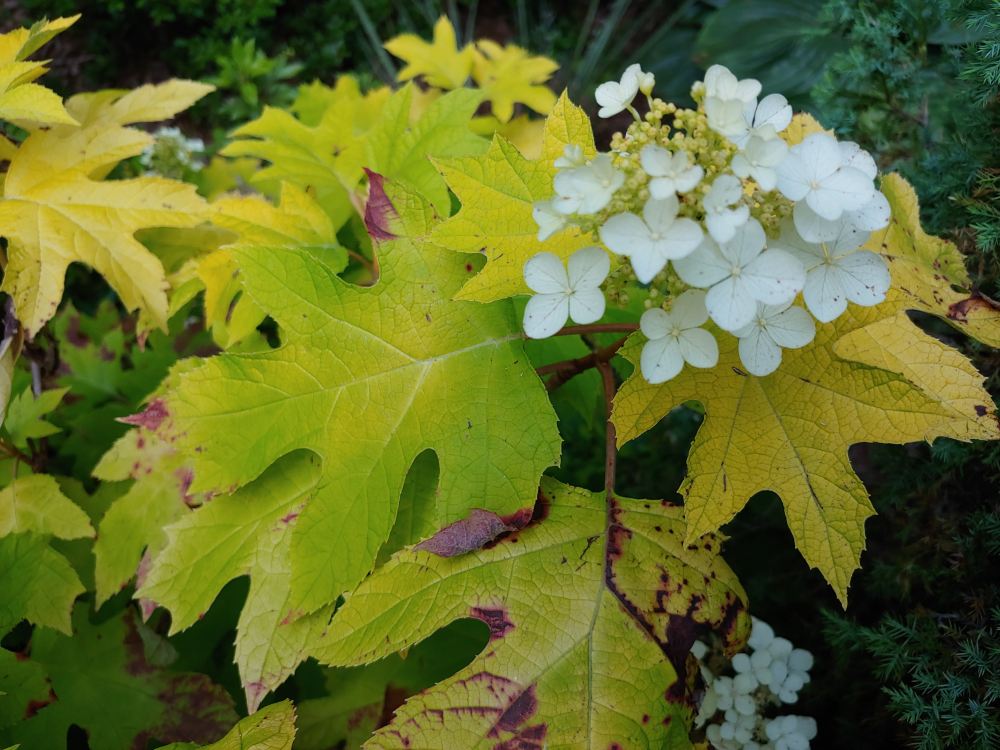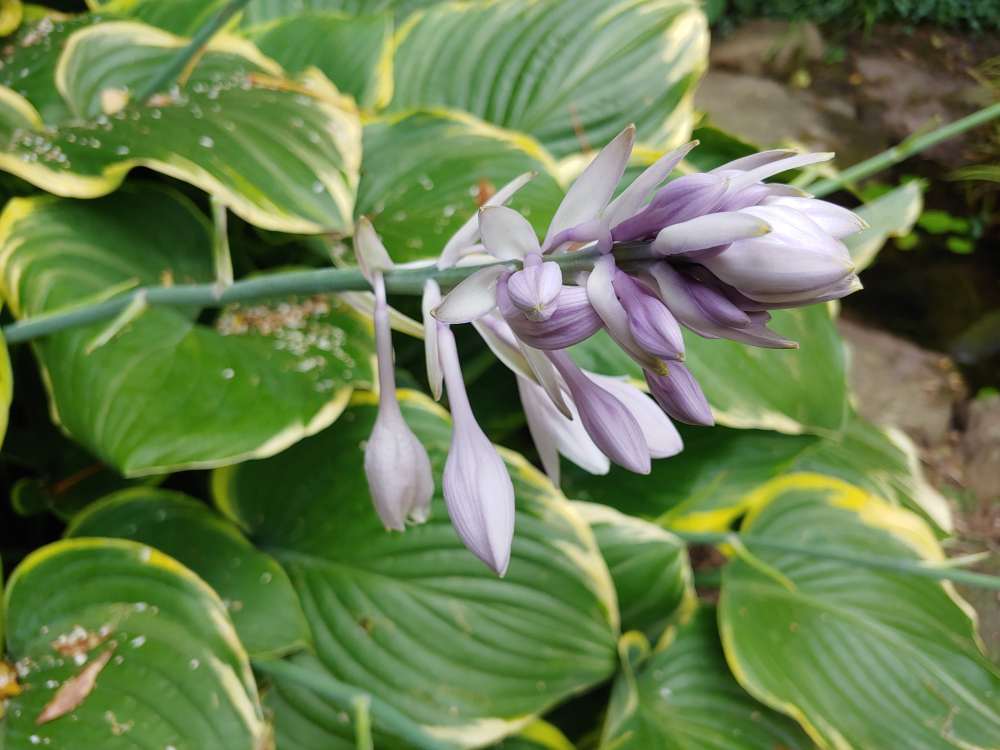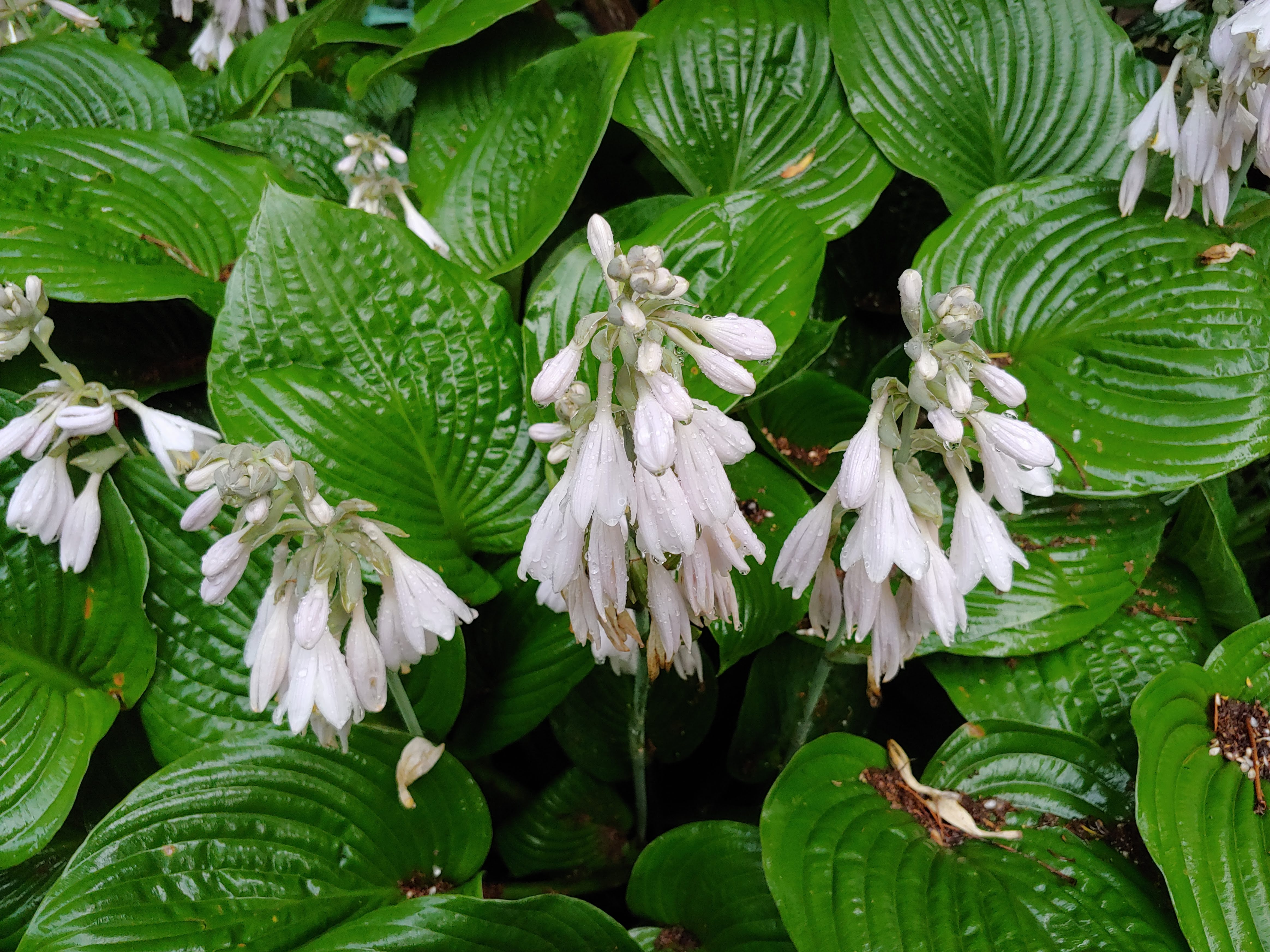The season has changed, but even with one ninety degree day after the other, the garden has not quite turned to its summer look. What look? Hostas in part sun fade, other broadleafs lose their vibrant coloring (reds and greens), and by mid season many will show a little crispiness around the edges.

This garden is not irrigated. Yes, I can stretch a hose out to reach about half, but I don’t. Many plants have never been watered (except naturally), so despite what sometimes seems a careless approach to siting plants, most are placed where they can thrive from the start. I think that summer irrigation makes only a small difference, though unquestionably new plantings are kept alive. The garden changes in summer, mostly for the worse, but far from horrible. It is only the contrast with spring that makes the summer garden disappointing at all.

Most plants are tolerant of a range of conditions, so little attention is needed for placement, but others are not so forgiving, so I try as best I can to duplicate their native habitats. This, of course, is subject to a number of variables outside my control, and not always successful.

There are no deep, moist, but well drained soils in shaded areas, but an area where piled leaves decay year after year can be almost as good, even if the soil is shallow. My wife marvels at the number of earthworms uncovered anytime she’s tidying up, and I have to figure if there are this many worms, something must be right about the nearby soil. I suppose that successful planting in areas that should be difficult dry shade proves this out.

I am pleased that rainfall has settled back to an almost normal level, though the total where I am is still up over eight inches on the year. Another big dogwood and a Vernal witch hazel are not doing well in the lower third of the rear garden, though after considerable trenching it is now dry enough to walk around without sinking too much. While I occasionally see tracks in the mud, deer still avoid much of the area that is swampy, that I stay out of as well. At least, I’m no longer hoping for a summer drought to dry this place out.

I so enjoy your down-to-earth writing style and share your gardening practice of leaving most plants to their own when it comes to watering. Only the new guys get the extra attention of hand-watering while older plantings must rely on Mother Nature. Of course, this year of abundant rain in the Northeast has provided plenty of nurturing for all green things and the entire yard looks lush and happy!
A storm is moving in this evening, andmore forecast for the next several days, but June was down for us and the worst parts of the garden are beginning to dry out.
A lack of irrigation is such a foreign concept. Almost everything here needs irrigation. We could not maintain such pretty landscapes without it. Ninety degrees is not too hot here, and the humidity is minimal (which is why ninety degrees is not too hot). Most natives are fine without watering, but only because they are partly dormant by the middle of summer, so are not very pretty.
Our heaviest rainfall is in the summer, but often it comes an onch or two in an hour, with much of it running off rather than soaking in. There are some areas that haven’t dried out since our period of rain started fourteen months ago.
Wait . . . . it started fourteen months ago?! If the periods of rain start at about the same time annually, then the current one started about two months ago, while the last one continues!? Does it ever stop?!